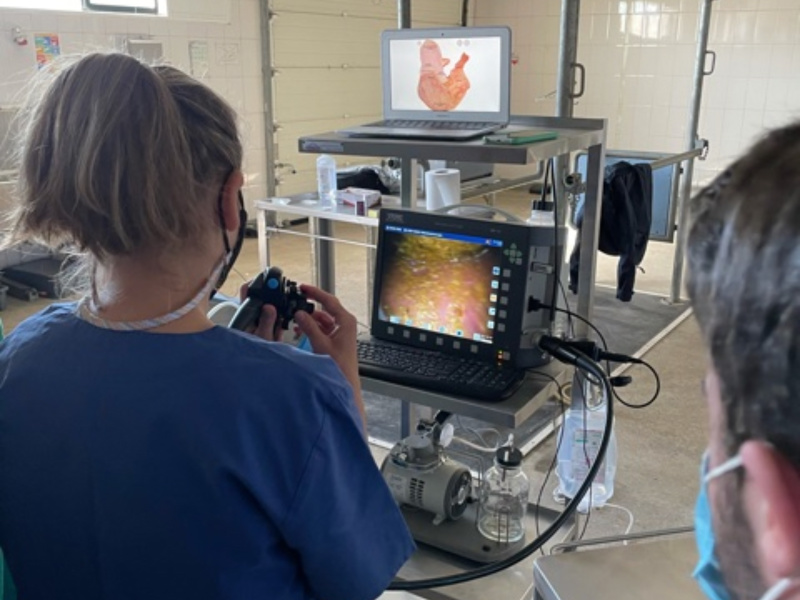Equine gastric ulcer syndrome (SUGE or EGUS) is a pathology with high prevalence in equids. It has recently received increased attention due to its impact on animal health and welfare as well as its economic impact (repercussions on the athletic performance of sport horses).
This syndrome has a multifactorial etiology and includes several alterations of the esophageal, gastric and duodenal mucosa, ranging from inflammation to ulceration.
Clinical signs manifested by horses with SUGE can range from episodes of mild colic to severe colic, which can be acute or recurrent. Other manifestations also described are loss of appetite or selective appetite, loss of sports performance, inappetence, melena, behavioral changes, poor coat condition and loss of body condition.
The definitive diagnosis of SUGE is only possible with the use of gastroscopy.
The new video endoscope of the CCEV allows the visualization of the gastric mucosa of the horse, glandular and non-glandular. With its 3.20 meters in length, it is possible to observe the pyloric region in detail and, in some horses, it can go up to the duodenal papilla. Angles from 180° to 210° make it possible to view otherwise hard-to-reach areas. This new equipment guarantees images with unparalleled clarity, brightness and sharpness. In addition, it also allows it to be associated with the transendoscopic biopsy technique in order to obtain mucosal samples for later histopathological examination.
With this acquisition, we take another step in diagnostic support to our referring veterinarians, allowing them to obtain better therapeutic results.
Through investment and innovation, our objective, from the beginning, is to make the CCEV a support center for equine veterinarians as a way of improving the quality of services provided in Veterinary Medicine.
Alone we go faster. Together we go further.

